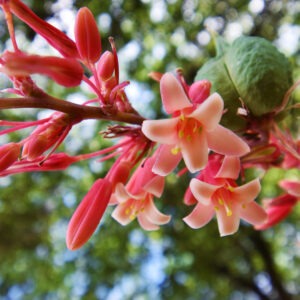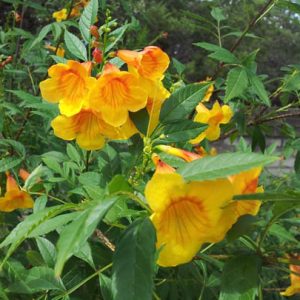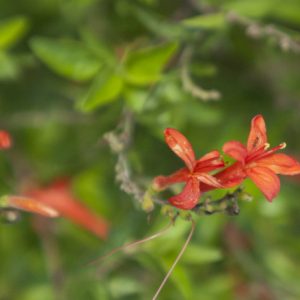In the spirit of graduation season, we’re highlighting the superlative stars that would fill the pages of a Garden Style San Antonio yearbook.
May. It’s a perfectly named month for a time of new beginnings. With a toss of the cap, many young graduates are planning a bright future for themselves and enjoying a brief respite before setting out on their new paths. This is a month for celebrating hard work and imagining possibilities!
Inspired by graduation season, my fellow planner, Brad Wier, proposed an idea: Identify the plants “most likely” to fill a Garden Style San Antonio yearbook.
Here’s our take.

Most likely to succeed: It’s impossible to fail with red yucca. We give it an A+ for its drought tolerance, year-round beauty, minimal care requirements and freeze hardiness. Plant it, water to establish and come back to see it looking just as gorgeous at the next reunion.
Most likely to be a survival expert: Cenizo is a tough Texas native, adapted to survive drought with its small, hairy leaves that minimize water loss. Also class valedictorian in our book.
Most likely to be a future viral sensation: Eye-catching, orange-red blossoms make Pride of Barbados a showstopper and it also turns heads later in the year when seedpods audibly explode and send seeds flying.
Most likely to create a greener future: Trees, pretty much any tree. As always, our thanks to previous generations for their foresight, especially on our recent 105-degree days. Whew!

Most likely to brighten your day: In full sun, the cheerful yellow blooms of esperanza greet you from May to October. Also a top performer in drought.
Best at making new friends: Popular almond verbena smells so sweet, it will attract all your neighbors along with butterflies and bees. Kidneywood is also “in” with pollinators.
Most likely to star in an award-winning film: With its “West Texas bona fides,” Brad votes for agaves to win for their cinematic looks and technical (read: drought hardy) merits. As dramatic as the theater kids.
Most likely to volunteer: You didn’t plant them, but the birds did. Hackberry trees often come up as “volunteers” in your yard and while many people call them “trash trees,” they’re extremely valuable for wildlife, serving as a host plant for several species of butterflies and providing berries for birds.
 Most likely to wear their colors forever: We all wore our school colors for spirit week, but flame acanthus wears its colorful blooms from summer into September.
Most likely to wear their colors forever: We all wore our school colors for spirit week, but flame acanthus wears its colorful blooms from summer into September.
Most likely to foster animals: Oaks feed and house an impressive number of species. Native oak trees support over 1,000 kinds of caterpillars which in turn feed songbirds and their offspring. Acorns produced in fall are eaten by squirrels, deer, birds, javelinas, foxes, badgers and dozens of other species.
Best teammates: If you’re looking for plants that work well together, remember to hydrozone, or group plants with similar water needs together. Check out some of our favorite plant lineups in our Plant by Numbers and WaterSaver Community landscape plans, designed to make it easy to create a winning landscape with our Landscape Coupon program.
Take a page from our yearbook with these plant selections if your future plans involve a new, more drought-tolerant landscape.
But after six years of drought, our yearbook advice is to take a vacation from watering this summer and pause planting for the season.
Instead, apply for our Landscape Coupon program by June 20 and prep your new beds. Then send in a photo by July 1 to get a $25 credit on your water bill per coupon. In September, we’ll send your $125 coupons so you can shop for approved coupon plants (note almond verbena, hackberries and oaks are not included).
Have an awesome summer and stay cool!


